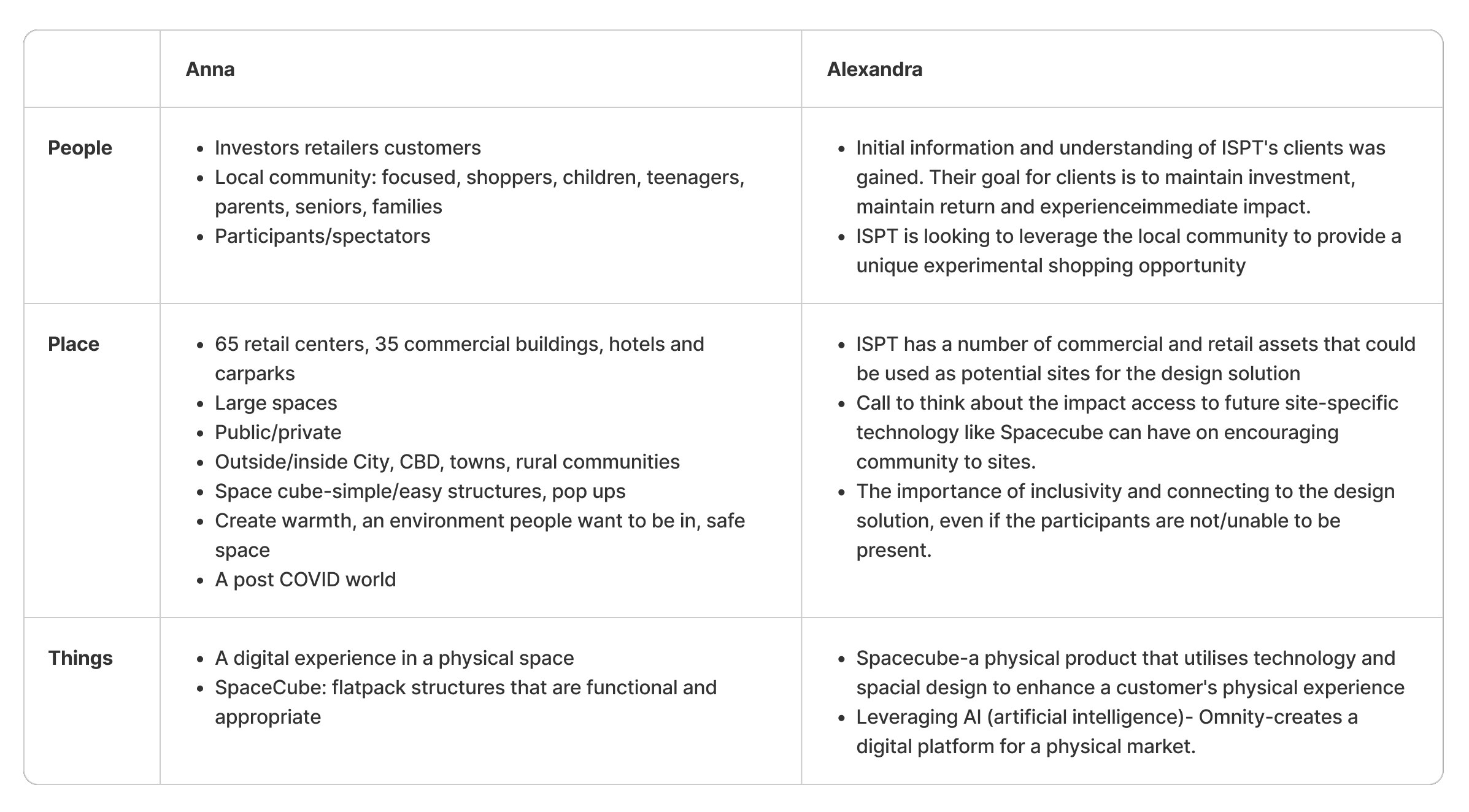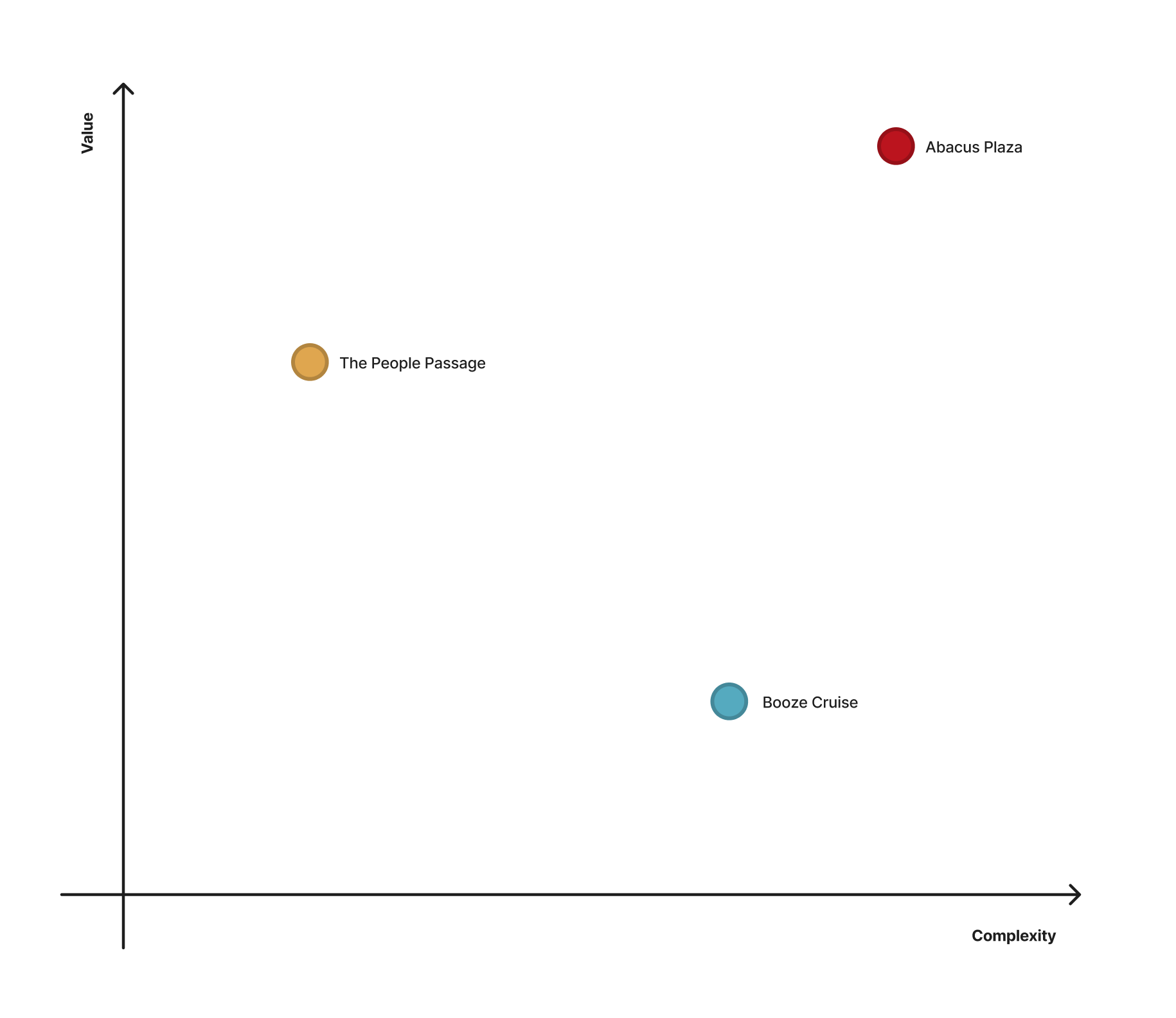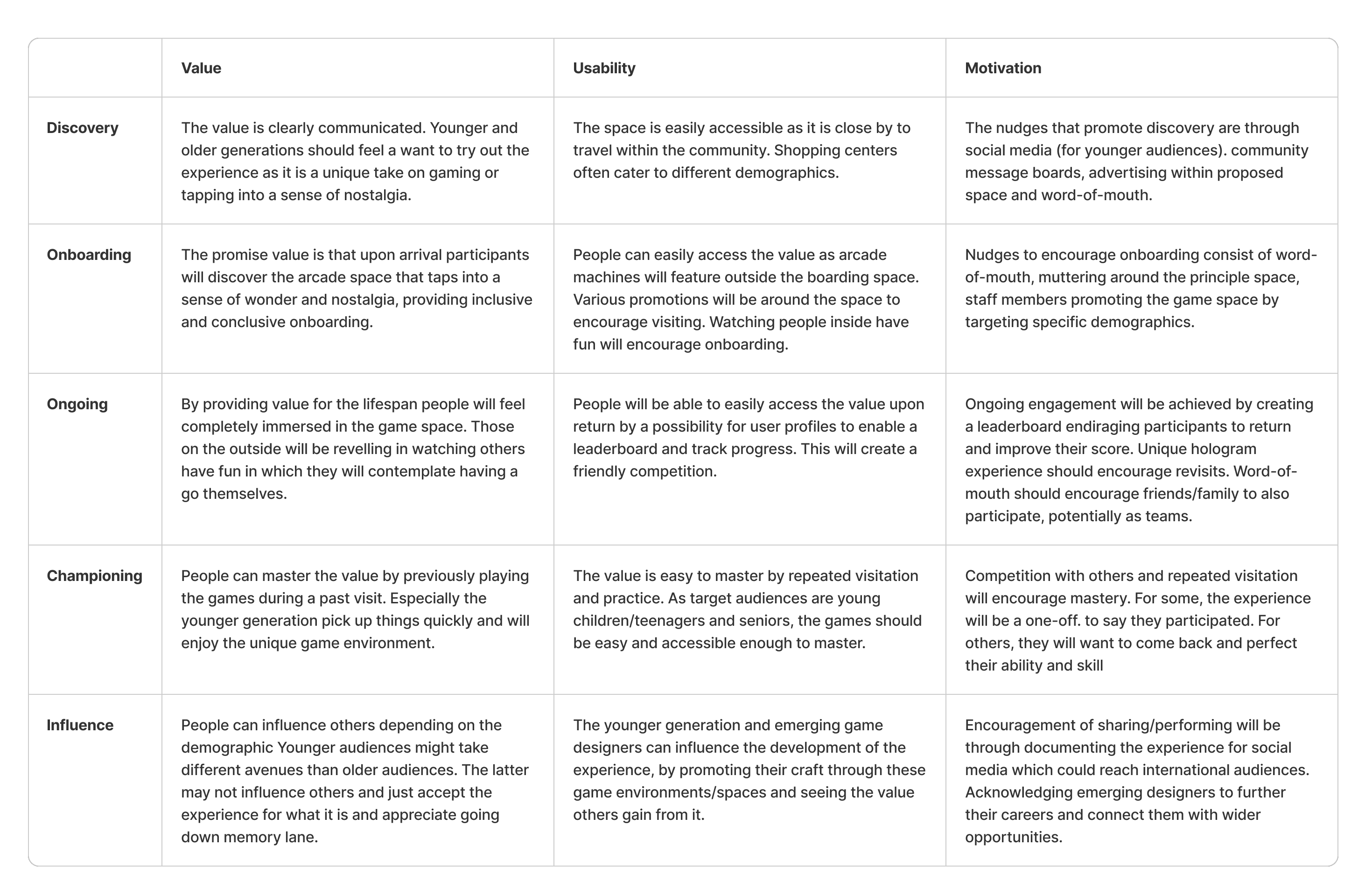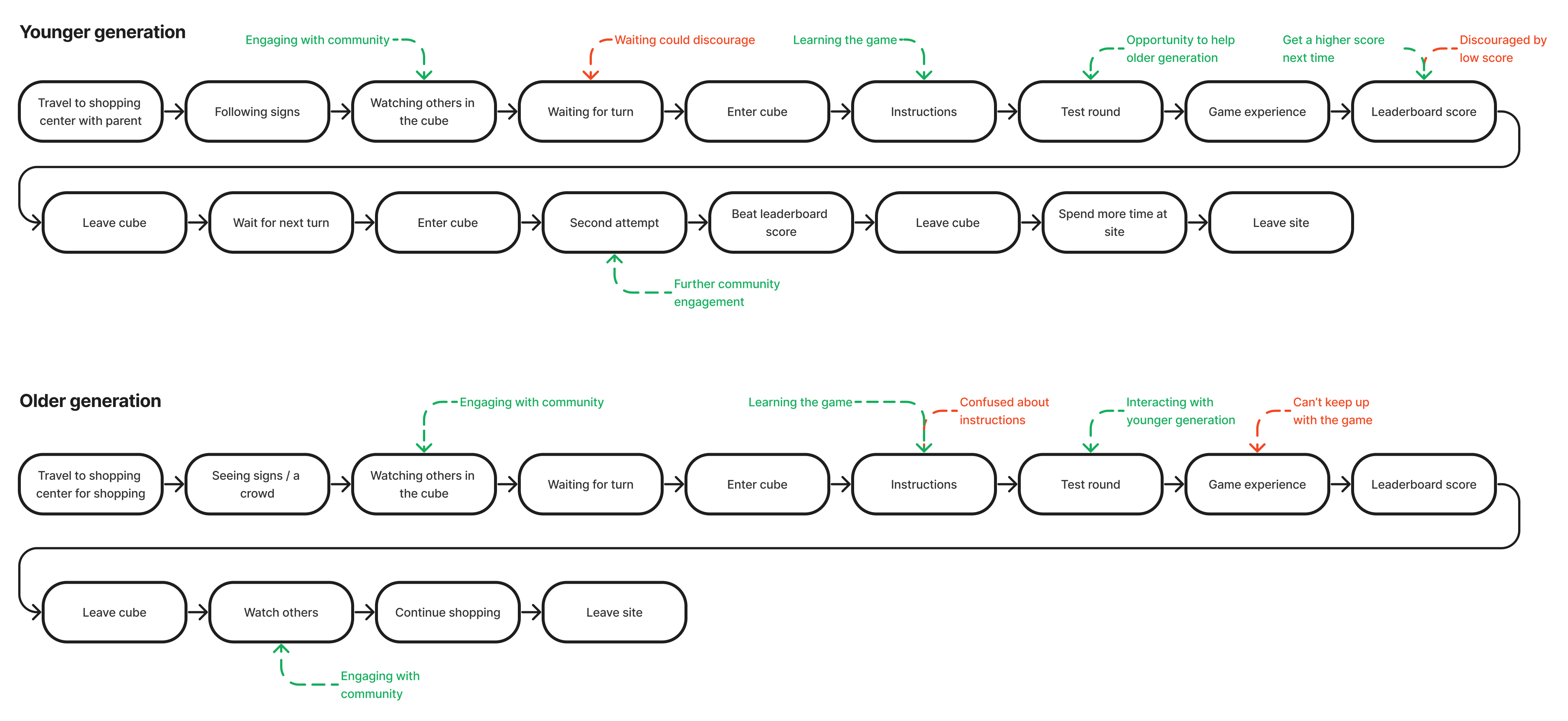Abacus Plaza

︎︎︎ 2022-2023
︎︎︎ UX
Delivered
- Defined digital experience concept
- Detailed report.
My tasks
- Conceptual thinking
- Defining concept through design models
- Presenting and pitching to client
- Report writing.
Brief
Create a community-first intervention through digital spaces that promote inclusion and positive change based on the context, challenges and opportunities presented by ISPT. Design a digital experience that brings emerging technologies to physical spaces, using SpaceCube, while creating positive change within the community.Solution
To create game spaces that connect two generations through a shared community experience, that evoke feelings of nostalgia for some, and a unique play experience for others.Process
We had meetings and pitch presentations with ISPT, and defined our concept through multiple design models.1. PPT analysis
During the initial meeting with ISPT, we identified the values and parameters to measure success. By recording our observations on people, places and things, we were able to collaboratively exchange thoughts and ideas. Through this analysis, design solutions were formed.

2. Value and complexity model
Through this model, we were able to analyse and compare our three final concepts. Depicted are each concept and its value to the community, as well as the complexity within the creation of each idea.

3. Value, usability and motivation model
After ISPT wanted to further explore the Abacus Plaza concept, we completed this model to uncover key steps in the user journey. Thinking critically about the present and ongoing effects, we were able to understand the value it would have for its users.
- Older generations could immediately connect with the concept, versus youth, who would acknowledge the value of the activity after physically interacting with it.
- From a usability perspective, both younger and older demographics would be able to identify a range of visual and audio cues through inherent gaming practices (for youth) and the embedding of visual cues throughout the activity (for older audience).
- Those who grew up visiting arcades and playing the games as a child would connect emotionally with the idea of revisiting with their grandchildren - a response to nostalgia.

4. Journey maps

5. Space, technology, time, resource mindmaps
Through mind-mapping, we were able to plan all the materials and resources necessary to the functionality of our concept.

6. Value and impact models
We used this model to evaluate the strengths and focus points of our final solution. After rating environmental impact, connection with site, community building potential, future-focus, and social impact, it was clear which elements had the most impact and importance for the outcome of the solution.


In collaboration with: Alexandra Mossop